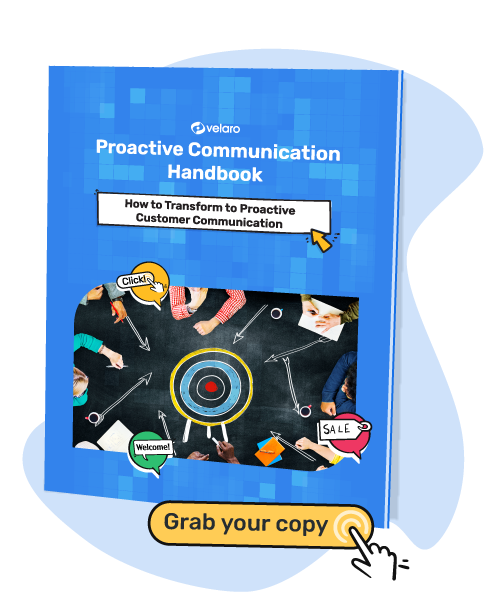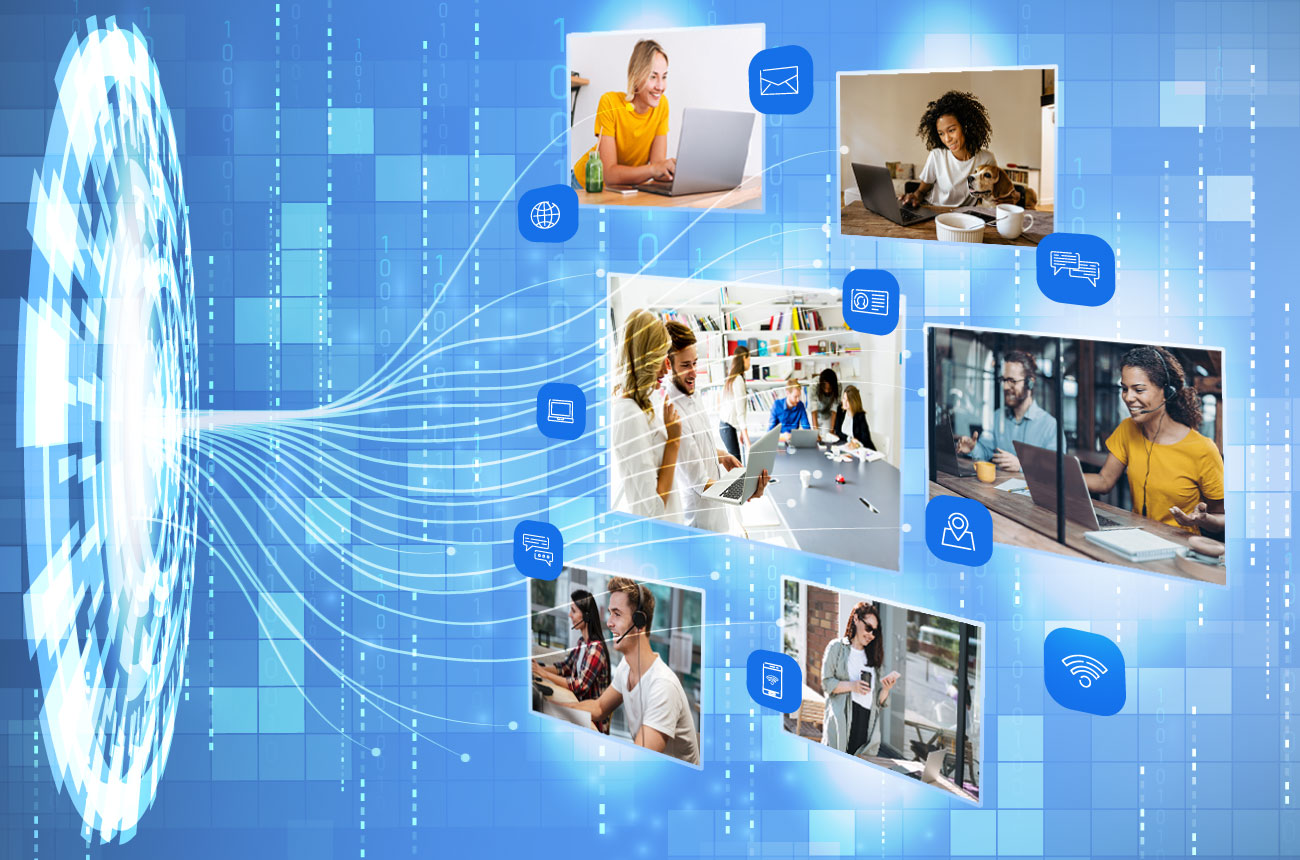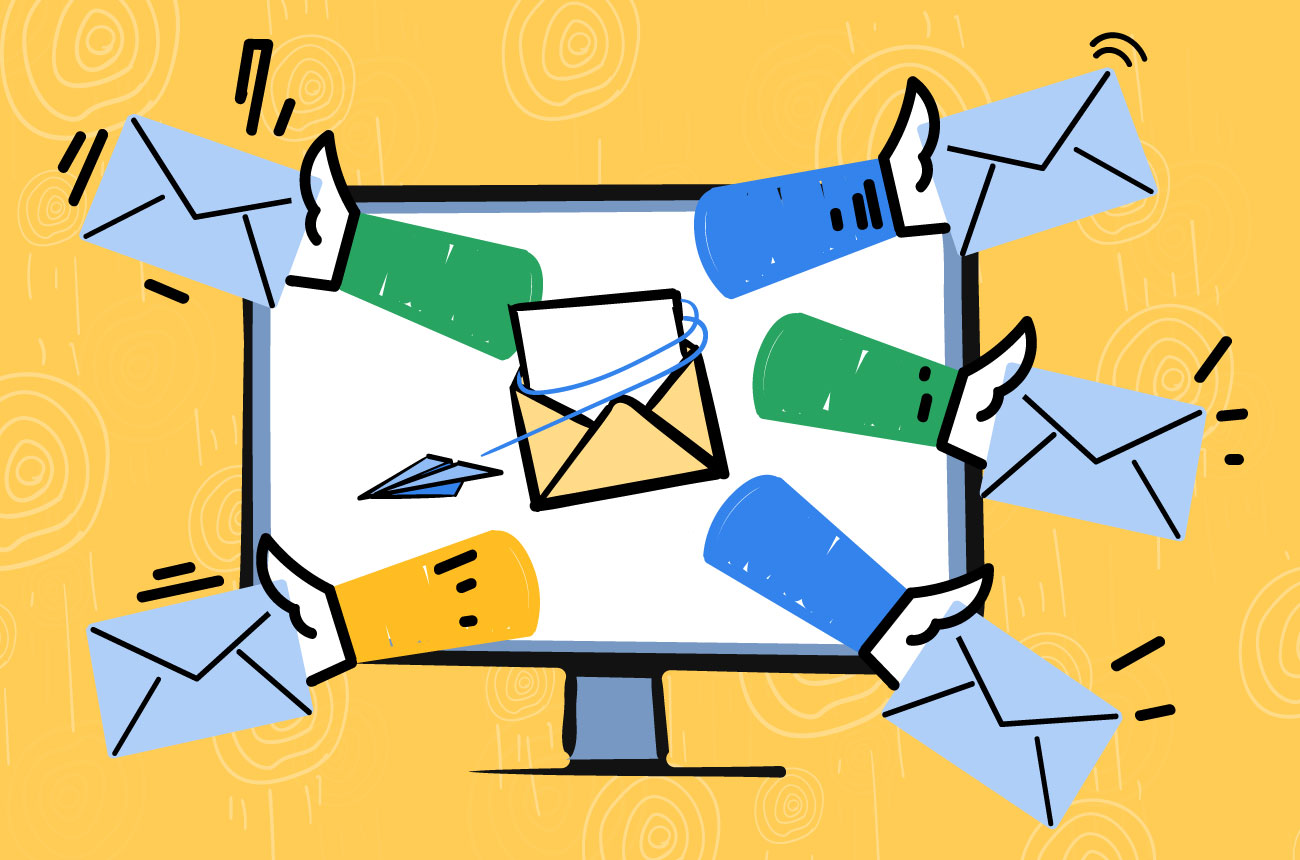Artificial intelligence (AI) has rapidly transformed how we work, and its impact will only continue growing in the coming years. While AI solutions can perform many tasks more efficiently and accurately than humans, it's not a substitute for human expertise and judgment. Rather, the key to unlocking the full potential of AI lies in combining it with human intelligence and creativity through collaboration.
This is where the concept of collaborative intelligence comes in. Collaborative intelligence is a strategy for achieving the best of both worlds for business processes, including digital customer engagement. Combining the strengths of human intelligence and AI allows us to undertake complex problems and make better decisions more effectively, efficiently, and, ultimately, more human.
What is collaborative intelligence?
Collaborative intelligence combines human intelligence and AI to achieve a common goal. It requires establishing a mutually beneficial relationship between humans and machines, where each complement and enhances the abilities of the other.

As a digital marketer or customer service experience professional, it is crucial to understand why the collaboration between humans and machines is successful. There are several reasons for this synergy. Primarily, humans excel in handling complex and nuanced situations that require empathy, intuition, and creativity. For example, if a customer expresses dissatisfaction with a product or service, a customer support agent is better equipped to manage the situation by providing a unique personalized solution that caters to the specific customer's needs.
Secondly, AI tools are excellent at processing vast amounts of data quickly and accurately and are exceptional at handling repetitive tasks that involve speed. By delegating these jobs to machines, humans can focus on higher-level tasks that require critical thinking and decision-making. In marketing, where businesses must scale strategies and analyze customer data to make informed decisions about their target audience and messaging, AI can help identify patterns and insights rapidly, allowing businesses to make data-driven decisions that lead to better results.
However, even when AI is involved, it's crucial to maintain a human touch. Achieving the right balance between human and machine collaboration is crucial for optimal performance. It's worth noting that customers appreciate businesses that offer a way to interact with real people instead of relying solely on machines.
91.5% of leading businesses have embraced AI technologies and solutions, but only 14.6% have deployed AI capabilities in their business processes. Source: NewVantage
Benefits of human-AI collaboration
- Increased efficiency: AI and machines can handle repetitive tasks swiftly, freeing up employees to focus on more complex work. This leads to higher productivity and faster completion times.
- Improved accuracy: AI can often perform tasks with a higher level of accuracy than humans. Collaborating with AI can enhance the quality of work. For example, AI can help with data analysis, ensuring insights are based on reliable data.
- Better decision-making: Human-AI interaction can lead to faster and more accurate decision-making. Humans provide context and insight, while AI processes and analyzes large amounts of data.
- Improved customer experience: AI can help businesses understand and meet consumer demands. AI-powered chatbots provide quick and efficient customer service, and AI-driven analytics help businesses understand customer behavior and preferences.
- Enhanced safety: AI can improve safety in industries such as manufacturing and healthcare. By monitoring systems and detecting potential safety risks, AI can help prevent accidents and reduce harm to workers or patients.
Challenges of human-AI collaboration
- Communication challenges: Human-AI interaction can be challenging due to differences in communication styles. While AI and machine learning systems rely on algorithms, humans communicate through natural language. This can lead to misunderstandings and errors.
- Lack of trust: Trusting machines can be difficult, especially when humans don't fully understand the technology. Establishing trust is crucial for successful human-AI interaction.
- Bias risks and ethical concerns: AI solutions may have inherent biases based on training data, raising ethical concerns about data privacy, algorithmic bias, and job displacement.
- Training needs: Using AI tools effectively requires training for humans and machines, which can be time-consuming and resource intensive.
- Data quality: AI systems depend on high-quality data. Biased or incomplete data can lead to inaccurate results.
Human-AI collaboration in customer service
Customer service is a critical business function, and AI has the potential to revolutionize the way it's delivered. Adding AI components to customer service tools such as chatbot software, live chat systems, voice over internet protocol (VoIP), and predictive analytics solutions transform how businesses interact with customers.

For example, a customer support chatbot or a virtual assistant can use natural language processing to quickly answer common questions like "What are your business hours?" or "How do I reset my password?" without requiring a human agent to step in.
However, despite the growing use of AI, human connections are still relevant in customer service. Human agents can offer a personal touch such as empathy that AI cannot match, building customer trust and rapport.
AI isn't meant to replace human agents. Instead, it can work with customer support reps to provide faster and more accurate responses to inquiries requiring intuition and problem-solving skills, thereby enhancing the customer experience.
A well-designed workflow with effective handoffs between employees and machines is necessary for successful human-AI interaction in customer service. One way to achieve this is by integrating AI platforms that cater to specific customer needs.
For instance, implementing chatbots that handle initial customer queries and then pass them on to live chat agents as requested or required by a customer, saves time, and provides the best and quickest possible response to customers. Self-service chatbots offer solutions to the rapid demands of customers, increasing resolution rates and customer satisfaction.
VoIP and click-to-call features are popular for personalized customer service. These tools let customers connect with agents from a website without navigating phone menus or waiting on hold. Adding an AI element to this type of communication channel can assist in routing calls to the best agent and provide relevant customer information before a human agent takes over the call.
Predictive analytics tools can help agents anticipate customer needs and suggest appropriate solutions. By combining the strengths of humans and AI, businesses can provide a more efficient and effective customer service experience. Yet, it's critical to design the business workflow in such a way as to minimize the risk of AI detection, making the interaction feel natural and authentic to customers.
Benefits of human-AI collaboration in customer service
- Saves time and reduces the workload on agents: Automating routine tasks with AI, such as data entry and answering FAQs using knowledge base software, free agents to focus on more involved matters, resulting in faster and more accurate responses.
- Enables businesses to operate around the clock: AI chatbots and virtual assistants can support customers around the clock, regardless of time zones or schedules.
- Supports better decision-making: AI can analyze customer data and provide valuable insights to help agents make informed decisions and personalized recommendations.
- Improves understanding of users: AI can help analyze customer behavior and preferences to help agents tailor their interactions, improving overall satisfaction and loyalty.
- Enhances business processes: Automating tasks and improving decision-making with AI can streamline operations and reduce costs while improving agent efficiency and performance.
Human-AI collaboration in marketing
Marketing has evolved tremendously since the days of traditional advertising. The rise of AI has changed how businesses reach out to customers and opened up a world of new MarTech solutions for personalized marketing experiences.

One of the most significant ways AI can assist marketers is through personalization. By collecting and analyzing customer data, AI-powered personalization engines can help businesses create custom marketing campaigns tailored to suit individual users' needs. This personalization can take many forms, including customized product recommendations, personalized emails, and targeted social media ads.
Tailored a chatbot marketing strategy increases the chances of conversions and enhances customer retention. AI can also help marketers identify patterns in customer behavior and predict future trends, allowing businesses to stay ahead of their competition.
Another way AI can assist marketers is through the use of customer engagement platforms. These platforms use AI to collect and analyze user data, including purchase history, demographics, and user engagement patterns, providing real-time insights into user behavior, allowing companies to respond quickly to changing customer needs. AI-powered customer engagement platforms can also help businesses automate omnichannel interactions, creating a single source of truth and helping employees to focus on more strategic initiatives.
Marketing chatbots are another way AI is helping marketers improve customer engagement. These chatbots use NLP to communicate with customers and, conversationally, assist with customer service, lead generation, and sales. This creates a more customized journey for consumers and empowers businesses to provide instant support 24/7.
In addition, AI can analyze customer feedback and sentiment, providing businesses with valuable insights into how their customers feel about their products or services. This allows them to quickly identify areas for improvement and make changes that will enhance customer satisfaction.
Benefits of human-AI collaboration in marketing
- Better personalization: AI can analyze data to predict consumer behavior, allowing marketers to create more personalized campaigns that resonate with their audience.
- Enhanced efficiency: Automating tasks with AI can free up time for marketers to focus on creative and strategic work, leading to a more efficient marketing team that produces high-quality work.
- Enhanced scalability: AI can help businesses scale their marketing efforts without increasing headcount, making it beneficial for rapidly growing companies.
- Risk mitigation: AI can reduce the risk of human error in marketing campaigns by automating tasks like data analysis and report generation.
Key principles for successful human-AI collaboration
Customer service teams and digital marketers need to understand the key principles of a successful human and AI collaboration. To achieve this, businesses must ensure that they only use AI to solve specific problems, and not just for the sake of it.
AI should be used to enhance human capabilities, not replace them. Human creativity, empathy, and intuition are critical problem-solving skills that cannot be matched by machines. Additionally, ongoing training and development for employees are essential for continuously learning and adapting to new technologies and for creating a successful symbiosis of AI and human collaboration.
Here are some key principles that can guide a successful human-AI interaction:
1. Identify the right problems to solve
Use AI to solve repetitive, data-driven tasks requiring high accuracy.
2. Involve diverse teams in the process
Involve domain experts, data scientists, and end-users to ensure that the solution meets everyone's needs and to mitigate potential bias.
3. Use AI to augment, not replace, human capabilities
AI can help automate repetitive tasks and provide data-driven insights, while humans can bring creativity, empathy, and intuition to problem-solving.
4. Responsibly collect data
Ensure data privacy and security, collect data ethically and transparently, and align it with business objectives.
5. Continuously learn and adapt
Invest in ongoing training and development for employees and evaluate the effectiveness of AI solutions and AI research regularly.
6. Prioritize user experience
Prioritize user experience and design intuitive workflows to drive adoption and deliver value to the business.
7. Support customers through the transition
Provide clear communication and support throughout the transition to AI-powered processes to ensure customers feel comfortable and confident.
By following these principles, businesses can create successful human and ai collaborations that enhance the customer experience while maximizing business objectives.
The Future is Collaborative
Collaborative intelligence is the perfect marriage of human and artificial intelligence, offering businesses an opportunity to take advantage of the strengths of both to provide better customer service and marketing experiences. While this concept is relatively new, early adopters and industry leaders are already exploring how to use it to improve business processes.
Despite the challenges, such as data privacy and training, the benefits of human and AI partnership are significant. For instance, conversational AI chatbots can assist human agents in providing faster and more efficient support, leading to better customer satisfaction.
But the benefits of collaborative intelligence extend beyond increased productivity. By leveraging AI to augment human empathy and judgment, businesses can create more authentic customer interactions, reduce wait times, and cultivate brand loyalty. As the technology behind artificial intelligence continues to advance, it's becoming increasingly clear that its potential to collaborate with humans is boundless and poised for exponential growth.
As we look ahead, the seamless integration of AI and employees will be a competitive differentiator for businesses looking to boost their bottom line and cultivate customer loyalty. By embracing collaborative intelligence and enhancing human empathy and judgment with the speed and scale of AI, businesses can transform their operations, markets, industries, and workforces.
Looking for a smarter way to engage with your customers? Unlock the power of human-AI collaboration and achieve your business goals faster with Velaro’s customer engagement platform. Sign up for your free trial now






